Legion Class Preview Series: Druid


Welcome to our World of Warcraft: Legion class preview series. In this entry, we’re exploring the Druid—to find out what’s in store for a different class, check out the overview.
We continue our early look at class and specialization design with the Druid. In these blogs, we’ll be exploring class identity, discussing Legion’s new designs, and presenting core combat abilities for each specialization—laying out the foundation upon which talents and Artifacts will build further. With that in mind, let’s delve into what it means to be a Druid in World of Warcraft.
Guardians of nature who seek to preserve balance and protect life, Druids have unmatched versatility on the field of battle. This is in part because druidism is much more than a fighting discipline—it’s a way of life steeped in traditions so ancient that even the origin of their kind is preserved largely in mythology passed on through millennia.
Druids harness nature’s raw energy for an incredible breadth of offensive and defensive abilities, as well as to restore life to the wounded. Through communion with nature and the demigod Cenarius, Lord of the Forest, Druids are supernaturally endowed with the gift of shapeshifting, allowing them to take the form of all manner of nature’s creature and access powers as distinct as they are diverse.
Known for hybrid utility and shapeshifting, Druids have four diverse and well-established specializations. In Legion, we’re focusing on empowering Balance gameplay, strengthening the cohesion of Guardian abilities and their fantasy themes, and renewing Druids’ overall trait of shapeshifting between forms to fulfill distinct functions.
Making use of multiple forms for different situations has been difficult for many years, either due to a lack of access to the “off-spec” talents that make your alternate forms feel strong or because the process itself has felt overwhelming and convoluted. To help solve this issue, we’re taking a new route by replacing Heart of the Wild with a full row of Affinity talents, which essentially allow every Druid to choose an off-spec from the remaining three specializations.
Affinities provide two benefits: first, a passive ability that is useful at all times, even to your main role; second, access to multiple key abilities to use in associated shapeshifting forms. To give you a sense for how choosing your Affinity will impact gameplay, regardless of what form you’re in, here’s a look at the passive abilities they grant:
- Balance Affinity
- Astral Influence: Increases the range of all spells, abilities, and autoattacks by 5 yds.
- Feral Affinity
- Feline Swiftness: Increases movement speed by 15%.
- Guardian Affinity
- Thick Hide: Reduces all damage taken by 10%.
- Restoration Affinity
- Ysera’s Gift: Constantly heals the Druid, or allies when the Druid is at full health.
Unlike Heart of the Wild, Affinities are not temporary buffs. This enhanced access to an off-spec, delivered through a cleaner game mechanic, empowers Druids of any specialization to make interesting situational combat decisions.
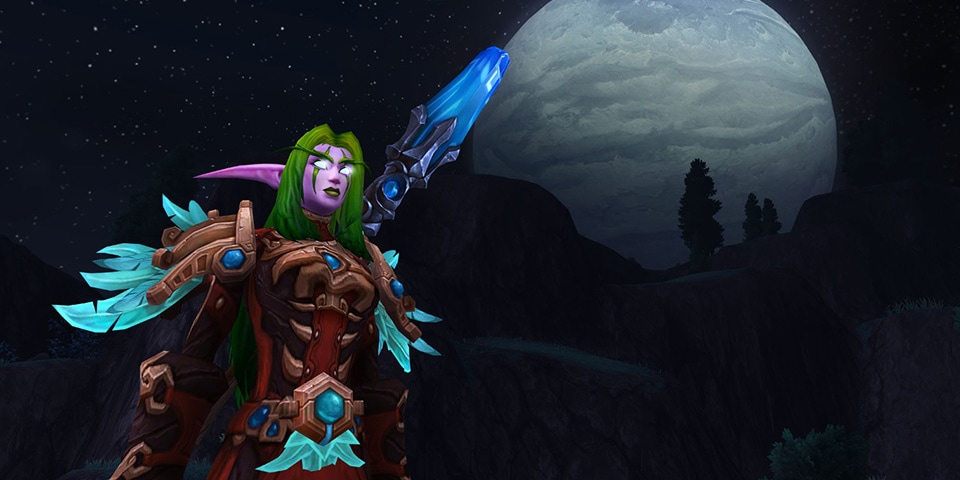

Balance
The elements that carve form into the universe are fluid forces of nature. Some beings seek to bend the power of these natural elements to their will. Druids, however, worship the protecting spirits of nature. Long ago, nature’s equilibrium was thrown out of balance, leaving the world vulnerable to catastrophic events, including the first invasion of the Burning Legion.
By leveraging the sacred powers of the moon, the sun, and the stars, balance druids access arcane and nature magics—made more potent still through shapeshifting, when the spellcaster takes the form of the moonkin—to aid in the fight against imbalance that threatens the natural order of all things.
“Balance druids access arcane and nature magics to fight imbalance in the natural order of all things”
Gameplay
Balance Druids have had a variety of cyclical rotations over the years. The core design problem in all of these cycles is that they’ve forced players into watching closely for UI cues and casting spells in largely predetermined orders. The Legion design is focused on providing a flexible combat experience, where you can use abilities as you’d like, and each has a specific purpose. The Eclipse Bar has been completely replaced by an Astral Power resource, which is built and spent, and provides a platform for abilities to create interesting, engaging, and powerful effects. Balance gameplay will center on maintaining your DoTs, generating Astral Power with a mixture of Lunar Strike and Solar Wrath, and spending Astral Power on either Starsurge or Starfall.
Here’s a basic look at the core combat abilities for Balance Druids:
- Moonfire
- 45 yd range, Instant
- A quick beam of lunar light burns an enemy for minor Arcane damage and then an additional strong Arcane damage over 18 sec.
- Usable while in Bear Form.
- Sunfire
- 45 yd range, Instant
- A quick beam of solar light burns an enemy for minor Nature damage and then an additional strong Nature damage over 14 sec to the primary target and all enemies within 5 yards.
- Lunar Strike
- 45 yd range, 2.5 sec cast
- Call down a strike of lunar energy, causing strong Arcane damage to the target, and minor Arcane damage to all other enemies within 5 yards.
- Generates 15 Astral Power.
- Solar Wrath
- 45 yd range, 1.5 sec cast
- Hurl a ball of solar energy at the target, dealing moderate Nature damage.
- Generates 9 Astral Power.
- Starsurge
- 40 Astral Power, 45 yd range, Instant
- Launch a surge of stellar energies at the target, dealing massive Astral damage.
- Also grants you Lunar and Solar Empowerments, which increase the damage of your next Lunar Strike or Solar Wrath by 30%, respectively. You can accumulate up to 3 of each Empowerment.
- Starfall
- 60 Astral Power, 45 yd range, Instant
- Calls down waves of falling stars that damage enemies at the targeted location. Deals strong Astral damage over 8 sec.
- Enemies in your Starfall take 30% additional damage from your Moonfire and Sunfire.
- Mastery: Starlight
- Increases the damage of Starfall and Starsurge, and the effect of the Empowerments that they grant by an additional 30% (with Mastery from typical gear).
Additionally, to give you an idea of how some talents may build upon this, here’s an example of one of their Balance-specific talents:
- Blessing of the Ancients
- Instant
- Gain a Blessing of the Ancients, activating or swapping between one of the two following beneficial effects:
- Blessing of Elune – Increases Astral Power generated by Solar Wrath and Lunar Strike by 50%.
- Blessing of An’she – Grants 3 Astral Power every 2 sec.
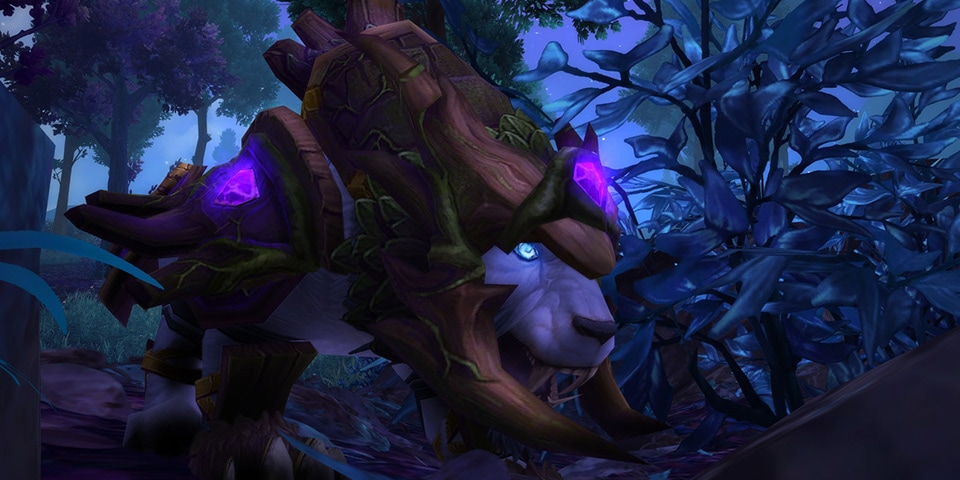

Feral
Feral druids also seek to curb imbalance in nature. They observe the fantastic intricacies of the physical world and the delicate fabric in which all living creatures are given purpose. Whether on land or in the sea, in a lush jungle or an uncultivated desert, death is part of the cycle which sustains life. Nature is an eternal dance between predator and prey.
As a shapeshifter, the feral druid endlessly pursues a greater understanding of this truth. They seek a visceral connection to the wild, and in combat take the form of a deadly feline predator. Feral druids become ferocious, agile stalkers—ripping, biting, and bleeding their enemies dry. The forces of chaos are tamed by the druid’s primal fury.
“Feral druids become ferocious, agile stalkers—ripping, biting, and bleeding their enemies dry”
Gameplay
Feral Druids have a solid gameplay foundation that complements their fiction. Design changes in Legion are tempered, and we’re paying the most attention to talent options that provide a wider array of combat customization. Making Savage Roar optional in the talent tree in Warlords worked well to open up gameplay opportunities. We’re taking this approach further by flipping it around—Savage Roar is now a talent choice matched against two compelling alternatives that cater to different play styles.
Here’s a basic look at the core combat abilities for Feral Druids:
- Shred
- 40 Energy, Melee Range, Instant
- Shred the target, causing moderate Physical damage to the target. Awards 1 combo point.
- Damage increased by 20% against bleeding targets.
- While stealthed, Shred deals 20% increased damage, and has double the chance to critically strike.
- Rake
- 35 Energy, Melee Range, Instant
- Rake the target for minor Bleed damage and an additional strong Bleed damage over 15 sec. Reduces the target’s movement speed by 50% for 12 sec. Awards 1 combo point.
- While stealthed, Rake will also stun the target for 4 sec.
- Rip
- 30 Energy, 1 to 5 Combo Points, Melee Range, Instant
- Finishing move that causes massive Bleed damage over 24 sec. Damage increases per combo point.
- Ferocious Bite
- 25 Energy, 1 to 5 Combo Points, Melee Range, Instant
- Finishing move that causes damage per combo point and consumes up to 25 additional Energy to increase damage by up to 100%.
- When used on targets below 25% health, Ferocious Bite will also refresh the duration of your Rip on the target.
- Critical strike chance doubled against bleeding targets.
- Omen of Clarity
- Passive
- Your autoattacks have a chance to reduce the Energy cost of your next Cat Form ability by 100%.
- Primal Fury
- Passive
- You gain an additional combo point when you critically strike with a combo-generating attack.
- Damage over time cannot trigger this effect.
- Mastery: Razor Claws
- Increases the damage done by your Cat Form bleed abilities by 60% (with Mastery from typical gear).
Additionally, to give you an idea of how some talents may build upon this, here’s an example of one of their Feral-specific talents:
- Jagged Wounds
- Passive
- Your Rip, Rake, and Thrash abilities deal the same damage as normal, but in 33% less time.
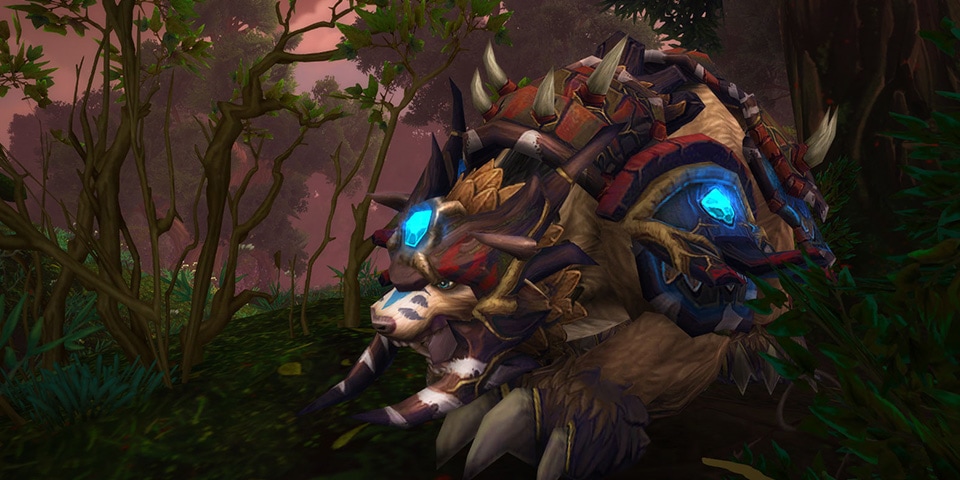

Guardian
Like their feral brothers and sisters, guardian druids attune themselves to nature through the animal kingdom. They commune with the wild to understand how life perseveres through adversity. They know that the creatures who survive are often those built to best protect themselves and their kin. In this, the guardian druid finds a deep and harmonious value in the steadfast—all the while recognizing that sturdiness requires an aggressive stance when danger comes near.
Taking the form of a great bear, the guardian druid becomes a massive wall of fur, claw, tooth, and rage, aided by the forces of nature, standing between allies and any opposing threats.
“Taking the form of a great bear, the guardian druid becomes a massive wall of fur, claw, tooth, and rage”
Gameplay
Powerful themes fuel the Guardian Druid, but the gameplay falls short of delivering on them. In particular, Guardian Druids have had a strong emphasis on avoidance, dodging attacks more than almost any other tank, with abilities accentuating that. However, this doesn’t mesh well with the image of the tough and sturdy bear. We want Guardian Druids to survive through their sheer tenacity, thick hide, massive resilience, and strong regeneration. To this end, we’ve redesigned several parts of the Druid combat ability toolkit to instead focus on those core defensive ideas—health, armor, mitigation, and regeneration—while deemphasizing dodge.
Here’s a basic look at the core combat abilities for Guardian Druids:
- Mangle
- Melee Range, Instant, 6 sec cooldown
- Mangle the target for strong Physical damage, reducing the target’s movement speed by 50% for 12 sec. Deals 20% additional damage against bleeding targets.
- Generates 5 Rage.
- Lacerate
- Melee Range, Instant, 3 sec cooldown
- Lacerates the enemy target, dealing moderate Bleed damage and an additional moderate Bleed damage over 15 sec. Stacks up to 3 times.
- Lacerate has a 25% chance to reset the cooldown on Mangle.
- Thrash
- Instant, 6 sec cooldown
- Strikes all enemy targets within 8 yards, dealing minor Bleed damage and applying Lacerate for an additional moderate Bleed damage over 15 sec.
- Moonfire
- 40 yd range, Instant
- A quick beam of lunar light burns the enemy for minor Arcane damage and then an additional strong Arcane damage over 12 sec.
- Usable while in Bear Form.
- Defensive
- Ironfur
- 40 Rage, Instant
- Increases armor by 100% for 6 sec.
- Multiple uses of this ability may overlap.
- Mark of Ursol
- 40 Rage, Instant
- Reduces magical damage taken by 30% for 6 sec.
- Frenzied Regeneration
- 10 Rage, Instant, 20 sec recharge (2 charges)
- Heals you for 100% of all damage taken in the last 6 sec over 6 sec (minimum 5% of maximum health).
- Mastery: Nature’s Guardian
- Increases your maximum health and healing received by 40% (with Mastery from typical gear).
- Also increases your attack power by 20% (with Mastery from typical gear).
- Ironfur
Additionally, to give you an idea of how some talents may build upon this, here’s an example of one of their Guardian-specific talents:
- Rend and Tear
- Passive
- Your Lacerate bleed now also reduces the target’s damage done to you, and increases damage you do to the target, by 3% per stack.


Restoration
The many gifts provided by nature must sometimes be reciprocated. Restoration druids seek order in the world by tending directly to its many life forms. Friend to flora and fauna alike, restoration druids celebrate birth and growth. Where there is decay, they bring rejuvenation. Where there is abatement, they summon regrowth. Life not only needs protection—it needs nourishment.
To foster this harmony, the restoration druid builds a bond with the things that grow, gaining inspiration from the flower’s bloom, the seed’s sprout, the mushroom’s spores, and the tree’s growth. Like nature, the restoration druid perseveres through patience and persistence, the foundation upon which all life is built and sustained. They use this power to mend wounds and provide persistent remedies that keep their allies from falling.
“Friend to flora and fauna alike, restoration druids celebrate birth and growth”
Gameplay
Restoration Druid themes are clearly defined, and there’s a lot of cohesive flavor to love in how the spec plays. As a result, we’re making minimal changes. Their Mastery had the most room for improvement, having basically become a passive effect. We’ve redesigned it to emphasize layering healing-over-time effects, favoring more engaging gameplay, while also catering to the Restoration themes.
Here’s a basic look at the core combat abilities for Restoration Druids:
- Mastery: Harmony
- Your healing is increased by 12% (with Mastery from typical gear) for each of your Restoration heal over time effects on the target.
- Healing Touch
- 2% Mana, 40 yd range, 2.5 sec cast
- Heals a friendly target for a moderate amount.
- Regrowth
- 3.7% Mana, 40 yd range, 1.5 sec cast
- Heals a friendly target for a moderate amount and another minor amount over 12 sec.
- Regrowth has a 60% increased chance for a critical effect.
- Rejuvenation
- 1.9% Mana, 40 yd range, Instant
- Heals the target for a moderate amount over 15 sec.
- Lifebloom
- 2% Mana, 40 yd range, Instant
- Heals the target for a moderate amount over 10 sec. When Lifebloom expires or is dispelled, the target is instantly healed for a moderate amount.
- Lifebloom can be active only on one target at a time.
- Efflorescence
- 4.3% Mana, 40 yd range, Instant
- Grow a healing blossom at the target location, restoring a moderate amount of health to three injured allies within 10 yards every 2 sec for 30 sec.
- Only 1 Efflorescence can be placed at a time.
- Swiftmend
- 1.6% Mana, 40 yd range, Instant, 30 sec cooldown
- Instantly heals a friendly target for a large amount.
- Wild Growth
- 7.5% Mana, 40 yd range, 1.5 sec cast, 10 sec cooldown
- Heals up to 6 injured allies within 30 yards of the target for a moderate amount over 7 sec.
- Healing amount starts high and declines over the duration.
- Living Seed
- Passive
- When you critically heal a target with the direct healing portion of Switmend, Regrowth, or Healing Touch, you plant a Living Seed on the target.
- When the target is next attacked, the Living Seed will bloom and heal for 50% of the initial amount healed.
- Omen of Clarity
- Passive
- Your periodic healing from Lifebloom has a 4% chance to cause you to enter a Clearcasting state, causing your next Regrowth to be free.
Additionally, to give you an idea of how some talents may build upon this, here’s an example of one of their Restoration-specific talents:
- Flourish
- Instant, 1 min cooldown
- Extend the duration of all of your heal over time effects on friendly targets within 60 yards by 10 sec.
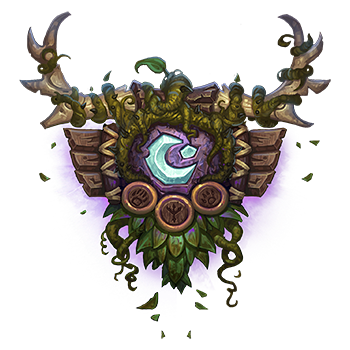

We hope you’ve enjoyed this early preview of our approach to Druid class and specialization design in World of Warcraft: Legion. We’ll wrap up our series tomorrow with a look at Rogues.
Return to the overview for the full class preview series.
Legion Class Preview Series: Rogue
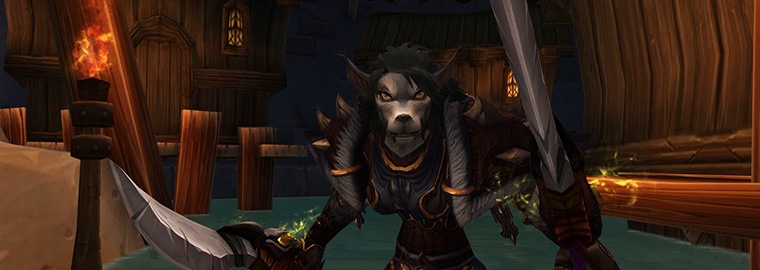

Welcome to our World of Warcraft: Legion class preview series. In this entry, we’re exploring the Rogue—to find out what’s in store for a different class, check out the overview.
We finish off our early look at class and specialization design with the Rogue. In these blogs, we’ve been exploring class identity, discussing Legion’s new designs, and presenting core combat abilities for each specialization—laying the foundation upon which talents and Artifacts will build further. With that in mind, let’s delve into what it means to be a Rogue in World of Warcraft.
Rogues fend for themselves, looking for fights in which they dictate the terms. They’re the shadows in the night that remain unseen until the right moment comes to strike—then they dispatch an opponent with quick blade work or a deadly toxin snuck acutely into the bloodstream. Rogues are opportunistic thieves, bandits, and assassins, but there’s an unparalleled art to what they do.
As with Hunters, the three Rogue specializations have long suffered from a lack of distinct identity. What truly sets an Assassination Rogue apart from Subtlety? And just what is a “Combat” Rogue anyway? Aren’t all three pretty focused on the art of combat? With that in mind, we’re making some bold changes that take each spec in a much more pronounced direction. We’re finding what makes them each special and amplifying their fantasy by creating abilities and talents unique to each spec that better align with their core theme.
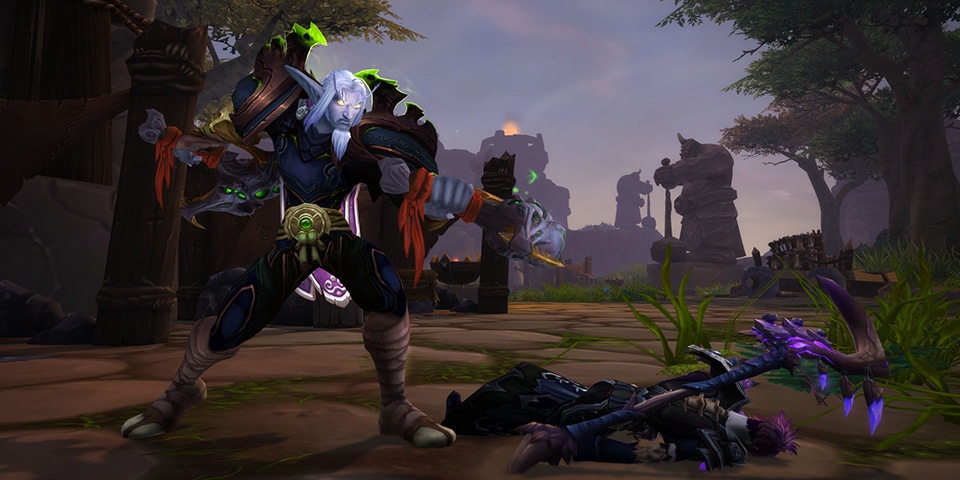

Assassination
One of the favorite tools of the assassin is a pair of daggers coated with vicious poisons. The damage they inflict is deceiving at first—the initial wounds often seem survivable, even superficial. Then the toxins set about their business. Wounds don’t close, and blood loss continues unabated. Assassins begin their work stealthily, choosing their targets and methods of engagement carefully—but once committed to a course of action, they stick to their target until the job is done rather than disappearing into the shadows to avoid their quarry’s blows.
“Assassins begin their work stealthily, choosing their targets and methods of engagement carefully”
Gameplay
For Rogues, no specialization describes itself better than Assassination, which also remains closely aligned with its existing fantasy. And we’re further enhancing those themes through their gameplay. First, this is now the only Rogue spec with access to poisons and bleeds, making much of your damage a little more delayed, but nonetheless massive. In addition, Venomous Wounds triggers based on a combination of bleeds and poisons now to accentuate that gameplay. Assassination is home to the most volatile combo-building. Mutilate is already effective in this regard, but Seal Fate needed some improvement—it now can trigger from both hands with Mutilate.
Here’s a basic look at the core combat abilities for Assassination Rogues:
- Garrote
- 45 Energy, Melee Range, Instant, 15 sec cooldown
- Garrote the enemy, causing strong damage over 18 sec and awarding 1 combo point. Silences the target for 3 sec when used from Stealth.
- Mutilate
- 55 Energy, Melee Range, Instant
- Attack with both weapons, dealing strong Physical damage. Awards 2 combo points.
- Envenom
- 35 Energy, 1 to 5 Combo Points, Melee Range, Instant
- Finishing move that drives your poisoned blades in deep, dealing instant Nature damage and increasing your poison application chance by 30%. Damage and duration increased per combo point.
- Rupture
- 25 Energy, 1 to 5 Combo Points, Melee Range, Instant
- Finishing move that tears open the target, dealing bleed damage over time. Lasts longer per combo point.
- Seal Fate
- Passive
- When you critically strike with a melee attack that generates combo points, you gain an additional combo point.
- Venomous Wounds
- Passive
- You regain 10 Energy each time you deal Bleed damage to a poisoned target.
- Mastery: Potent Poisons
- Increases the damage done by your poisons by 70% (with Mastery from typical gear).
Additionally, to give you an idea of how some talents may build upon this, here’s an example of one of their Assassination-specific talents:
- Elaborate Planning
- Passive
- Your finishing moves grant 20% increased damage done for 4 sec.
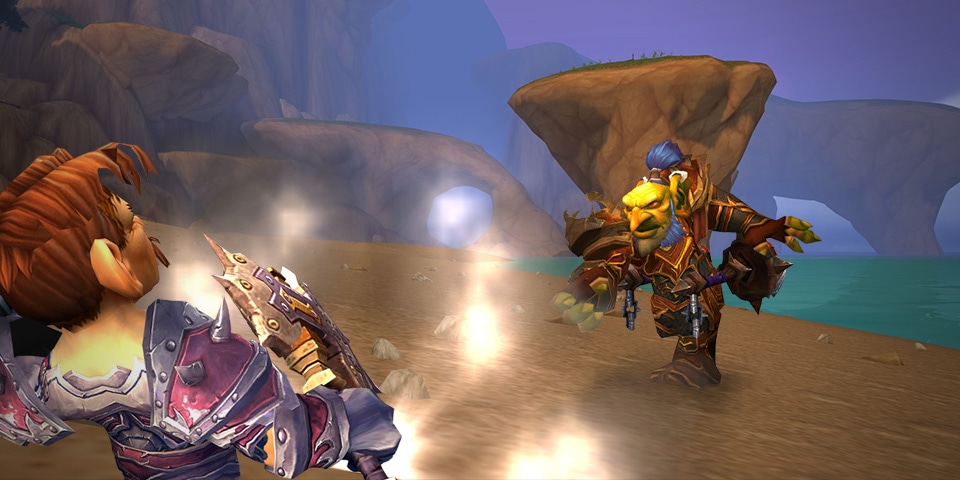

Combat
GONE!
OK, not exactly. The lack of a clear theme for the Combat Rogue really gave us an opportunity to reimagine the spec in Legion, to ensure that they have their own depth of character and a unique fighting style that sets them apart from the other Rogue specs.
Outlaw
“To survive in such a world, outlaws must become master swordsmen in toe-to-toe combat—and they can’t shy away from fighting dirty”
Outlaw rogues are the unscrupulous scoundrels of Azeroth. Operating outside the law, they bend the rules and distort the truth to get what they need. While they share plenty in common with other rogues, these outlaws have little use for tact or discretion, happy to engage in a tavern brawl or spontaneous duel, rarely patient enough to wait in stealth for the opportune time to engage. To survive in such a world, outlaws must become master swordsmen in toe-to-toe combat—and they can’t shy away from fighting dirty. If blade fails to cut too deeply, the outlaw takes advantage of a concealed pistol, catching the enemy by surprise with a quick blast.
Gameplay
To achieve the “swordmaster” fantasy we’re going for with the Outlaw Rogue, we’re giving them several new and upgraded abilities, such as Saber Slash and Pistol Shot. We’re also deemphasizing Stealth, with Ambush being their only remaining opening move. Stealth will still provide its core Rogue utility, but Outlaws are more comfortable fighting toe-to-toe with a sword than skulking about. Finally, we’re ensuring that Outlaws retain several signature abilities from Combat, such as Adrenaline Rush and Blade Flurry. These abilities provide a good basis on which to build new and distinct flavor. A wide variety of talents enhance the fantasy further with themes of the swordmaster, brawler, or even pirate.
Here’s a basic look at the core combat abilities for Outlaws:
- Saber Slash
- 50 Energy, Melee Range, Instant
- Viciously slash an enemy, causing moderate Physical damage and awarding 1 combo point. Saber Slash has a 35% chance to strike an additional time, granting additional damage and combo point, and making your next Pistol Shot free.
- Pistol Shot
- 40 Energy, 20 yd range, Instant
- Draw a concealed pistol and fire a quick shot at an enemy, dealing moderate Physical damage and reducing movement speed by 50% for 6 sec. Awards 1 combo point.
- Slice and Dice
- 25 Energy, Instant
- Finishing move that consumes combo points to increase attack speed by 40%. Lasts longer per combo point.
- Run Through
- 35 Energy, 1 to 5 Combo Points, 8 yd range, Instant
- Lunging finishing move that causes damage per combo point and has increased range.
- Combat Potency
- Passive
- Your off-hand attacks have a chance to generate 15 Energy. Slower weapons have a higher chance.
- Ruthlessness
- Passive
- Your finishing moves have a 20% chance per combo point spent to grant a combo point.
- Mastery: Main Gauche
- Your main-hand attacks have a 44% (with Mastery from typical gear) chance to trigger an attack with your off-hand that deals minor Physical damage.
Additionally, to give you an idea of how some talents may build upon this, here’s an example of one of their Outlaw-specific talents:
- Quick Draw
- Passive
- Free uses of Pistol Shot granted by Saber Slash now generate 1 additional combo point, and deal 50% increased damage.


Subtlety
Subtlety rogues are the masters of the shadows, and they strike unseen. They don’t have the lethal poison-tipped daggers of the assassin or the brawling prowess of the outlaw, but their acumen on the battlefield and ability to hide in plain sight are unrivaled. Some claim the art of subtlety looks like malevolent shadow magic—but no matter from where their power is derived, these rogues are capable of performing devastating assaults on their enemies, slipping away unharmed to strike again without detection. Most rogues train their entire lives to learn how to walk in the shadows—subtlety rogues were born there.
“The subtlety rogue’s acumen on the battlefield and ability to hide in plain sight are unrivaled”
Gameplay
As the true masters of stealthy gameplay, we’ve pushed Subtlety further toward making heavy use of Stealth as their primary combat mechanic. The new version of Shadow Dance allows Subtlety to weave in and out of Stealth rotationally. Meanwhile, Shadowstrike provides incredible mobility for attacking from Stealth. Finally, to further reinforce the matter of their relationship with sinister Shadow magic, Subtlety makes use of a new ability called Nightblade, which applies Shadow damage over time.
Here’s a basic look at the core combat abilities for Subtlety Rogues:
- Shadowstrike
- 40 Energy, 30 yd range, Instant, Requires Stealth
- Strike through the shadows, appearing behind your target and dealing strong Physical damage. Awards 2 combo points.
- Backstab
- 35 Energy, Melee Range, Instant
- Stab the target, causing moderate Physical damage. Damage increased by 30% when behind your target. Awards 1 combo point.
- Nightblade
- 25 Energy, 1 to 5 Combo Points, Melee Range, Instant
- Finishing move that infects the target with shadowy energy, dealing Shadow damage over time and reducing movement speed by 50%. Damage and duration increased per combo point.
- Eviscerate
- 35 Energy, 1 to 5 Combo Points, Melee Range, Instant
- Finishing move that disembowels the target, dealing increased damage per combo point.
- Shadow Dance
- Passive
- Your finishing moves have a 20% chance per combo point to activate Stealth. For 3 sec, this Stealth will not break when you autoattack or take damage. When this effect occurs, a Shadow Decoy will appear nearby, confusing your enemies.
- Developer Comment: This will function differently in PvP, granting the use of abilities that require Stealth, but not actually providing Stealth.
- Shadow Techniques
- Passive
- Your autoattacks have a chance to generate a combo point.
- Mastery: Executioner
- Increases the damage done by your finishing moves by 55% (with Mastery from typical gear).
Additionally, to give you an idea of how some talents may build upon this, here’s an example of one of their Subtlety-specific talents:
- Relentless Strikes
- Passive
- You gain an additional 40 Energy when you enter Stealth.


We hope you’ve enjoyed this early preview of our approach to Rogue class and specialization design in World of Warcraft: Legion. We’re looking forward to hearing more feedback and sharing in ongoing conversations with the community regarding these and all of the other changes we’ve discussed in this series, and we’re excited to get this information out before our broader beta phase to make sure we have as much time as possible to iterate and carry on the conversation.
Thanks for reading, and we’ll see you in the Legion beta!
Return to the overview for the full class preview series.
